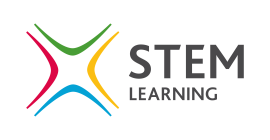- View more resources from this publisher
 National STEM Learning Centre and Network
National STEM Learning Centre and Network
Sound investigations
Purpose: As students progress through secondary science they will develop an understanding of waves as a means of transferring energy. Practical science activities around the study of sound are often used as a basis for understanding features of waves such as wavelength, frequency and amplitude. Digital technology can provide simple and inexpensive tools for such activities. Tablet devices have inbuilt microphones, speakers and display panels, and a variety of sound level, signal generator and frequency analyser apps are available.
Teaching approach: A digital device with a frequency analyser app can be used to investigate the properties of sound created by a variety of musical instruments and comparing these with simpler sounds from, for instance, tuning forks. Students use digital technology as a measuring and recording device, and may save screen shots of the wave patterns created as images for later comparison, or to print as part of a display.
Preparation: Groups of students will need different sound sources to compare, such as a musical instrument, whistle and tuning fork, plus a digital device such as a tablet computer or laptop with inbuilt microphone running frequency analyser software. Preliminary planning should consider how to collect comparative data and eliminate unwanted sources of sound.
A European project, Science on Stage, produces detailed and extensive guidance on this and other similar activities.
The Spectral Sounds article uses a similar approach to that described, but also provides further analysis opportunities more suited to older students.
https://www.science-on-stage.eu/page/display/5/28/1290/istage-2-smartphones-in-science-teaching
Show health and safety information
Please be aware that resources have been published on the website in the form that they were originally supplied. This means that procedures reflect general practice and standards applicable at the time resources were produced and cannot be assumed to be acceptable today. Website users are fully responsible for ensuring that any activity, including practical work, which they carry out is in accordance with current regulations related to health and safety and that an appropriate risk assessment has been carried out.




